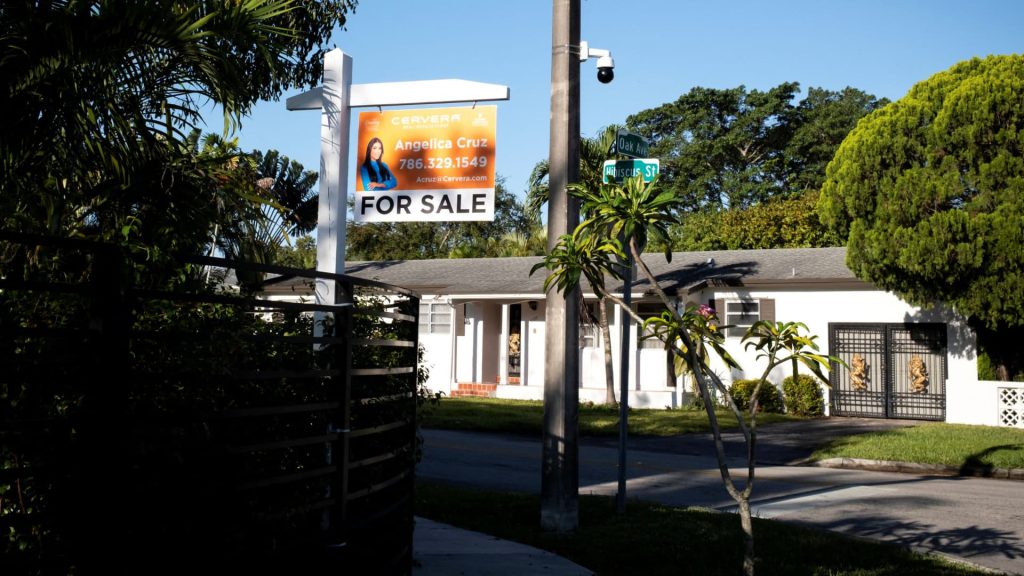The spring housing market of 2025 is facing significant challenges as rising mortgage rates and economic uncertainties dampen buyer activity. According to the National Association of Realtors (NAR), sales of previously owned homes fell sharply in March, marking the lowest pace for that month since 2009. The report indicates a widespread decline in sales across all regions, indicating a broader trend of sluggishness and affordability issues affecting the housing market.
| Article Subheadings |
|---|
| 1) Overview of March Housing Market Trends |
| 2) Regional Breakdown of Home Sales |
| 3) Inventory Levels and Their Impact on Pricing |
| 4) Buyer Demographics and Market Participation |
| 5) Economic Predictions and Future Outlook |
Overview of March Housing Market Trends
The housing market’s performance in March was markedly disappointing with a reported 5.9% decline in the sales of previously owned homes from February, leading to an annualized sale rate of 4.02 million units, according to data from the NAR. This number signifies the slowest pace for March in over a decade, touching on the severity of the ongoing housing downturn. Compared to the same period last year, sales were down by 2.4%, indicating consistent weakness across the market. The overall sentiment among potential homebuyers has shifted due to high mortgage rates, which reached over 7% earlier in the year, leading to affordability concerns that have hampered transactions.
Regional Breakdown of Home Sales
Sales figures varied significantly across different regions of the United States. The most pronounced decline occurred in the West, which saw a downturn of more than 9% month over month. This is noteworthy as the West had previously been the only region to experience a year-over-year gain, particularly due to robust job growth in the Rocky Mountain states. In contrast, other regions were not spared from the downturn as sales also dropped month on month. This disparity suggests localized economic factors influencing the housing market’s trajectory, with some areas benefiting from stronger economic conditions while others struggle with declining buyer interest.
Inventory Levels and Their Impact on Pricing
Interestingly, despite the drop in home sales, the market has seen a notable increase in inventory levels. As of March, 1.33 million homes were listed for sale, marking an increase of nearly 20% from the previous year. This surge in listings is critical for prospective buyers, potentially offering more choices but also leading to a cooling in price appreciation. The median home price for existing homes sold during March stood at $403,700, which, while still an all-time high for that month, represented a modest increase of just 2.7% compared to March 2024. This trend hints at a shifting dynamic in the market where an increase in available inventory, coupled with sluggish sales, might begin to exert downward pressure on prices over time. The typical definition of a balanced market is a 6-month supply of inventory, while currently, the market operates with a 4-month supply, suggesting it remains lean despite the increase in listings.
Buyer Demographics and Market Participation
The demographic landscape of the home-buying market remained relatively stable, with first-time buyers comprising 32% of the market in March, unchanged from the previous year. Historically, this figure hovers around 40%, indicating a potential reluctance among new buyers due to the current economic climate and the challenges presented by high mortgage rates. Additionally, the percentage of all-cash sales experienced a slight decline, falling to 26%, while institutional investors constituted about 15% of total sales. This demographic stability amid declining purchases reflects the diverse strategies of buyers navigating the current market environment while grappling with affordability issues and a tightening credit landscape for potential homeowners.
Economic Predictions and Future Outlook
Looking ahead, economic experts predict that the market conditions may continue to deteriorate. Reports of rising contract cancellations in March could signify waning confidence among buyers. The potential for further market volatility looms as inflation concerns, price increases for home furnishings due to tariffs, and general anxiety surrounding job security may encourage a more cautious approach from consumers. In the words of one market observer, “March numbers are bad, but they’re likely to get worse.” The interplay of these factors could contribute to an environment of hesitation among potential buyers, signaling a challenging road ahead for the housing market as it attempts to recover from current pressures.
| No. | Key Points |
|---|---|
| 1 | March 2025 saw a 5.9% decline in existing home sales from February. |
| 2 | Sales are at their lowest pace for March since 2009. |
| 3 | Inventory levels increased by nearly 20% year over year. |
| 4 | First-time buyers make up only 32% of the market, lower than historical averages. |
| 5 | Economic experts predict worsening conditions in the housing market going forward. |
Summary
The March 2025 housing market report highlights significant challenges stemming from high mortgage rates and economic uncertainties, which have collectively contributed to lower home sales and a cooling of home prices. With increasing inventory levels hinting at changing dynamics, the market faces a crucial period ahead. As potential buyers navigate affordability hurdles and broader economic concerns, it remains to be seen how these factors will shape the housing landscape in the coming months.
Frequently Asked Questions
Question: Why are home sales declining in March 2025?
The decline in home sales can be attributed to high mortgage rates and economic uncertainties, which have reduced buyer affordability and deterred transactions.
Question: What are the current inventory levels for homes listed for sale?
As of March 2025, there were approximately 1.33 million homes listed for sale, representing a nearly 20% increase from the previous year.
Question: How does the current real estate market impact first-time buyers?
First-time buyers make up only 32% of the current market, reflecting challenges in affordability and access to financing, which are deterring new entrants amid rising home prices and mortgage rates.
